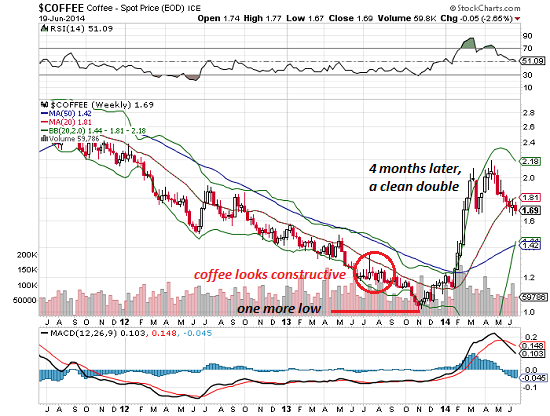Submitted by Charles Hugh-Smith of OfTwoMinds blog,
Timing matters, as fundamentals have no impact in a euphoric blow-off top or in a panic-driven, bidless crash.
I recently received an email from a reader suggesting I back up my opinions by publishing my own trading positions. The reader suggested that failure to put my money where my mouth is diminished the gravitas of the opinions published here.
He suggested that if I really believed in The Generational Short: Banks, Wall Street, Housing and Luxury Retail Are Doomed, I should bet against these for however long it took the trend to manifest–decades if necessary.
I understand the credibility value of putting my money where my mouth is: without some evidence that the writer is walking the walk, then we assume he/she is merely talking the talk or talking his book, i.e. supporting his positions publicly while he unloads the position in private.
There are fundamental problems with publishing one's trading positions as a gambit for credibility, and it's worth delineating them because they reflect the inherent uncertainties of trading and prognostication.
1. Markets do not trade on fundamentals. Though pundits and punters may refer to various fundamentals (price-earnings ratios, etc.) to justify their expectations of future stock prices, markets trade on emotions and the zeitgeist generated by Central Planning intervention, both publicly announced and secretly executed.
As a result, any analysis of fundamentals is for historical context only. Misguided attempts to predict what the market should do if fundamentals mattered rarely succeed, for the simple reason that fundamentals don't matter. They are invoked after the fact to justify one trend or another.
Here is a chart of the Dow Jones Industrial Average (DJIA). Did the fundamentals of the corporations that make up the DJIA fluctuate as wildly between 2000 and 2014 as the DJIA itself? The answer is no: what fluctuated wildly was the emotions of punters and the risk appetite set by Central Planning interventions.

2. Timing matters. Deteriorating fundamentals have no impact in a euphoric blow-off top, just as improving fundamentals have no impact in a panic-driven, bidless crash.
I'll use coffee to illustrate the point. As a hobby, I watch a lot of markets, and last year coffee started to look constructive after a multi-year decline from over $2.60 to $1.20.
I tend to be early on these kinds of trend reversals, and indeed I was early, as one more low lay ahead in November 2013. The classic "buy" signal occurred in January, when price popped above the 20-week moving average and that resistance became support.

If I'd announced opening a long position in coffee in late July, 2013, anyone following me into the trade would have experienced a 15% decline by November. Had they sold or been stopped out, it was a losing trade.
If they'd held their position for a mere 7 months, they would have gained about 75%– on an annualized basis, around 120%.
If they'd built a position over time (as many experienced traders do), the rise off the bottom would have afforded a relatively low-risk opportunity to add to the position. The inverse head-and-shoulders (the right shoulder was traced out in late January/early February) offered another relatively low-risk chance to add to the position.
The use of options to add to gains and/or hedge losses would have offered some basic risk management to the trade.
An imperfect entry trade was a loser if sold in November and never re-entered, and a highly profitable winner if held and/or added to. The larger point is that trading requires far more than a commentary establishing the fundamentals. It requires the discipline and experience to construct a trading plan for the position and the discipline to execute the plan. It requires an awareness of risk and the zeitgeist of Central Planning interventions, which work until they don't.
A position sold inopportunely generated a loss while the exact same position generated outsized gains if held or added to according to a trading plan that accounted for the possibility of being early to the trend change.
In my opinion, markets reflect a dynamic somewhat akin to the Heisenburg uncertainty principle of quantum mechanics, which holds that precision is fundamentally limited by Nature: the more precisely the position of a particle is determined, the less precisely its momentum can be known, and vice versa.
In an analogous fashion, the more precisely we can determine the likelihood of a trend change, the less precisely we can determine the timing of the trend change–and vice versa. (I'll call this the Smith Market Uncertainty Principle until someone informs me that others have published the principle under a different name.)
Posting anything less than a full trading plan is intrinsically misleading, and the likelihood of an inexperienced trader following the plan is low. (I know, having been that inexperienced trader many, many times.)
It's possible to be right about the fundamentals and lose money trying to trade those fundamentals. It's also possible to be wrong about the fundamentals and make a boatload of money trading Central Planning interventions.
My own advice that I try to live is: invest in yourself, not Wall Street.







via Zero Hedge http://ift.tt/1rgFVSn Tyler Durden
Tonight’s theme episode of The